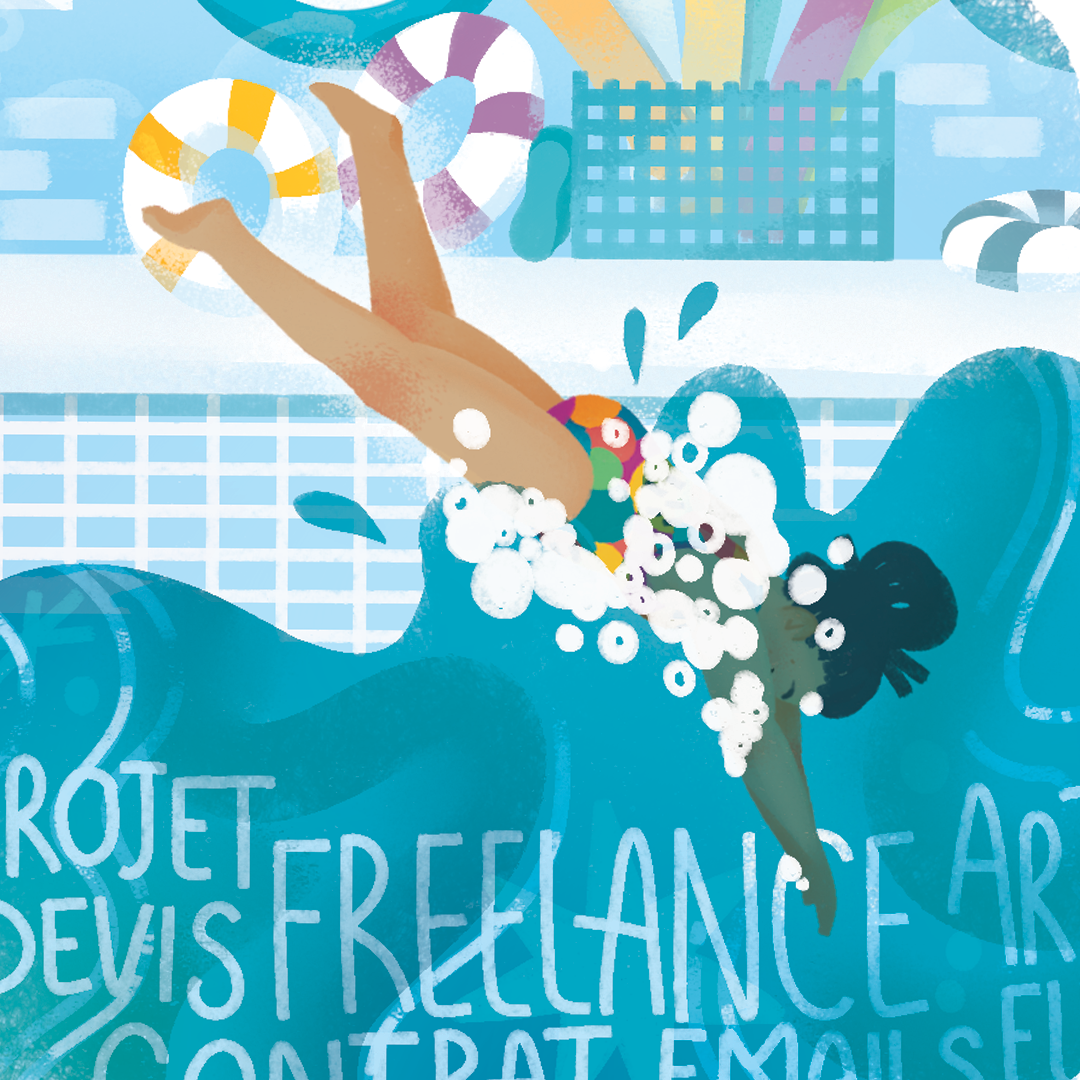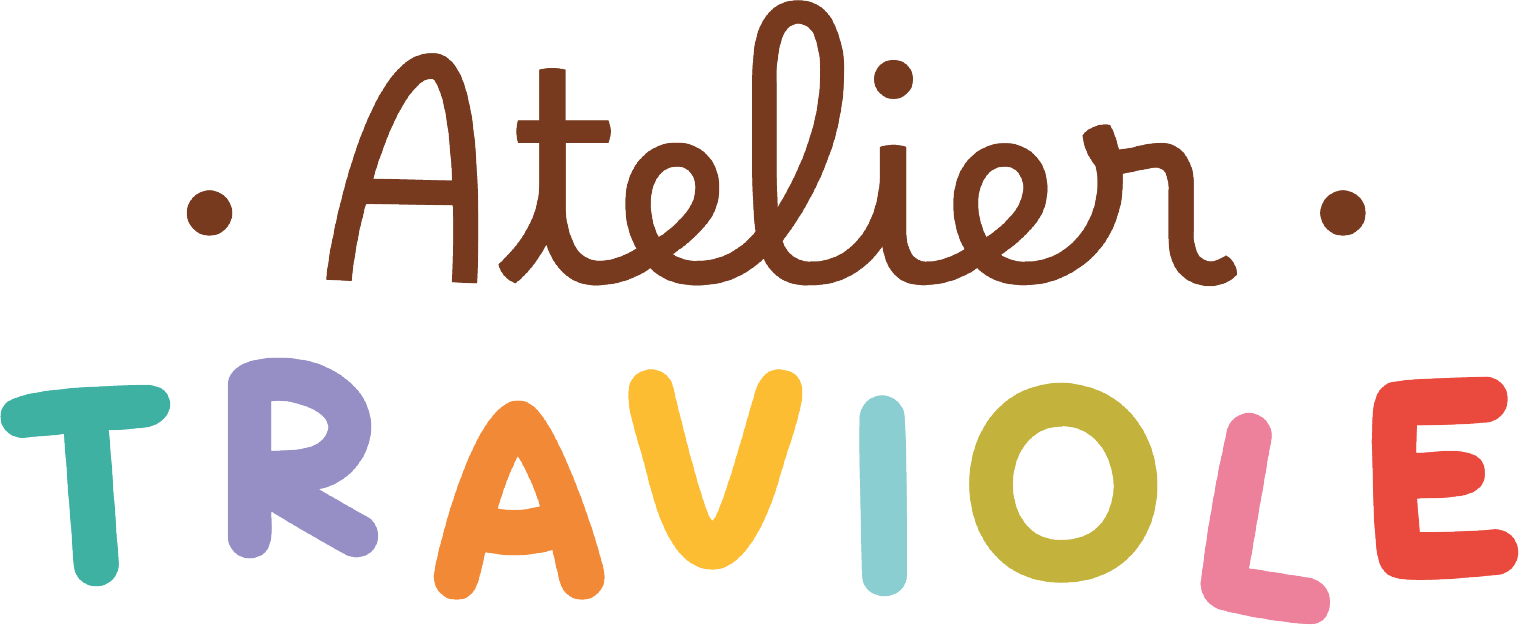When I decided to switch to a different career path in the summer of 2021, it was not the first time. Only, if I had previously gone from one training course to another, this time I was going straight into the deep pool: the job market, especially in the field of art, an ocean of possibilities full of uncertainties and challenges!
(I hope you have a good resistance to aquatic metaphors because I have a lot of them in stock haha)

The apprehension of entering the water... Fun fact: I've always been terrified of diving in head first!
Assessing to overcome the fear of water
“Working in art” is vast. Very broad. You should not be a thalassophobe when you look for the different activities considered as artistic, and that’s without counting the accessory activities that stem from them (such as the transmission of knowledge and public meetings). Being therefore a diverse and very customizable profession, I can only advise to have a quick assessment, at regular intervals, to establish :
- What we like…
- What we can do…
- What we want to do…
Why? Because rather than spreading ourselves too thin from the start by trying out all sorts of ways of earning money from our artistic practice, it is better to focus on our current interests and the methods we enjoy most (to keep in mind the motivation and excitement of having a good time), and then to make an honest review of our abilities (to reduce the risk of getting frustrated) before setting an achievable goal (to always feel like we’re moving forward).
Quarter 1:
- WOULD : Consolidate my artistic style
- WANT : Do commissions for individuals and develop my website
- WANT : To feel legitimate and build my professional network
Quarter 2:
- Working with external constraints
- Completing the Oracle and prospecting professionals by e-mail
- Securing a children’s literature contract with a publishing house
Quarter 3 (in progress at the time of writing) :
- Collaborate with passionate professionals
- Illustrate my first album & make professional collaborations
- Prospecting for board game creators
Dry land Workouts to prevent injuries

Once the picture has been drawn up, you may feel the urge to jump in the water. But be careful not to jump in too quickly! Because with the haste to move forward comes the drop in caution.
Obviously, all artists start out a little shaky but full of good will, and the first contracts can leave their mark: at best bad memories, aches, pains, remorses and at worst wounds.
If we can’t avoid these mishaps, we can at least prevent them by strengthening those muscles whose usefulness we know little about before we need them:
- Administrative procedures
- Estimates, invoices and accounting
- Contracts and transfers of rights
- Communication etiquette
- Pedagogy around specialized terms
Improve your technique through targeted training
Learning a swimming stroke from scratch can seem like a daunting task. So why not break down the overall movement into small, dedicated exercises? First the breathing, then the arms, then the legs, with and without equipment to get the muscle memory going!
Well, it’s the same in art, the best way to achieve a goal (the “Want” line of the balance sheet) is to chop it up into achievable tasks (the “Can” line), tasks that are then less scary and less time-consuming than a full project.
Let’s look at my big goal for the semester: to illustrate my first children’s book.
Some ideas to make this opportunity achievable:
- Make a table of publishing houses that I like, noting why
- Subscribe to illustrators who do what I like
- Contact professionals with whom I have a good relationship
- Compare the books I like
- Draw up a glossary of technical terms
- Compile the techniques used
- Compile the compositions of the illustrations
- Create characters sheets
- Make storyboards
- Illustrate a few pages of a known work
- Illustrate a few pages of an original text
- Prospecting for a few publishing houses
To name only eleven! And I’m sure you have plenty more in mind ;)
Enjoy every activity (even those where you don’t reach your goal)
Once the technical points have been learned, the muscles warmed up, the plan planned, there is only one thing left to do, jump in! The longer you wait, the less you dare, because you’ll always have something to blame yourself for, or you’ll always want the “best material”, the “best idea”, the “best technique”, the “best moment”. I myself, I can’t stop sabotaging myself, a little voice keeps telling me, despite these last 6 months, that I am not legitimate, not professional enough and not confident enough! And yet, there is no secret: to gain confidence, you have to gain experience!
A few tips to make your professional projects more fluid:

-
Make sure you warm up: don’t take the negotiation phase lightly, it will condition the rest of the session but also, and above all, the consequences of it.
-
Go into it with a central objective in mind: Speed of execution? Endurance on a long project? Learning a new technique/support? Perfecting techniques? Wellness for pleasure ? Communication and socialization ? Challenge and surpass yourself ?
-
Listen to your rhythm: keep an eye on the clock so you don’t get overwhelmed, save your energy, plan breaks and listen to the signals that make you stop.
-
Also pay attention to recovery: to avoid making the end of your projects too abrupt, take the pressure off and distance yourself from your progress. Even the “bad sessions” (those that don’t reach the goal, that stop early or in pain) have things to teach you and things to celebrate! Take time to reflect on your organization, your methods, your approaches, your communications, your expectations. Realize that a bad experience does not define your entire career, on the contrary, it allows you to grow and do better the next time!
Conclusion
On that note, I hope you have enjoyed reading this, albeit with some aquatic allegories. I also hope it has motivated you, or at least enlightened you on what it means to go from an amateur to a freelance artist.

Anyway, it’s wild how galvanizing it is to take the time to write a review, especially when you work alone. It is easy to become your own “worst colleague” by constantly comparing yourself to other freelancers on social networks. But I have grown so much and I am proud of it!
So today, I celebrate my race! My failures as well as my victories over the last 6 months. Now that I’ve taken the plunge, I can’t wait to see where this impulse will take me! 🌊
Links to continue reading…
Are you motivated but creatively stuck ? Go take a look at this previous article : Messiness against Art Block where I share my method to find inspiration again !
Links to explore…
Julia_arts’ Youtube channel who honestly talks about life as a freelance (FR)
Art Business with Ness’ Youtube channel, who is giving advices to young illustrator (EN)
Arena Swim, If I made you want to swim and gather info on this as well ;)
